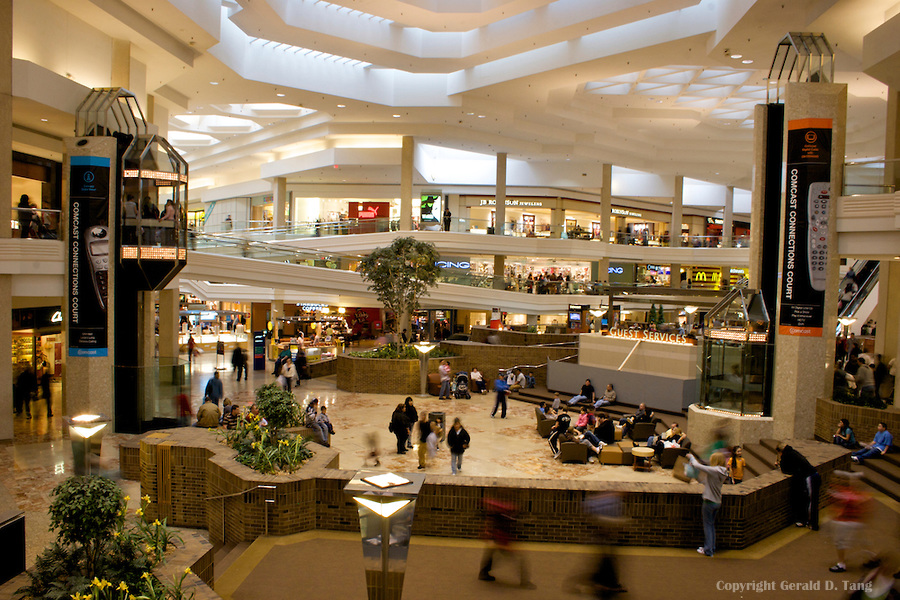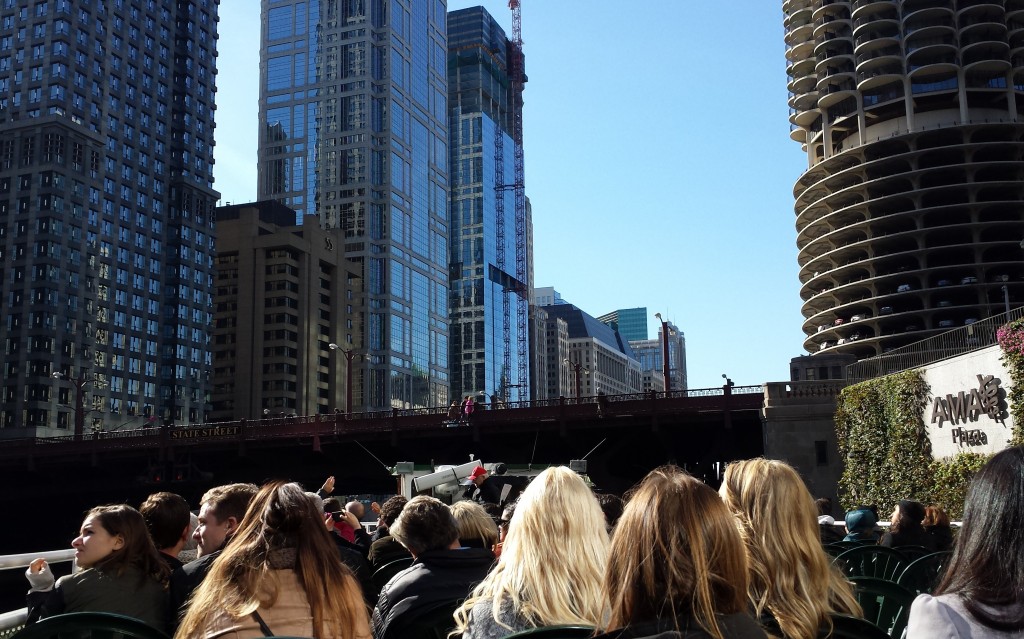Place – Unique or Ubiquitous
Where do you like to go? And when you think of your town’s center, where is it? A recent visit to two downtowns – each successful in its own way – started me thinking about different ways and places that we come together.
Schaumburg, Illinois is a large Chicago suburb with about 75,000 inhabitants and no traditional downtown. Joel Garreau examined it in Edge City, a thought-provoking book he wrote in the 1990s about suburban development. Schaumburg has attractive single family homes, pleasant parks, some mid and large businesses, and a several large roads with all the standard franchises and dealerships one sees dotted around the country. If you were to locate the heart of Schaumburg, at least in terms of crowds of people in a shared space, it would be Woodfield Mall, now part of the Simon’s Corporation.
Woodfield Mall is the largest mall in Illinois and the tenth largest nationally. Last year there were more than 27 million visits to the mall. In 2000, visitors to Chicago named it the best suburban attraction. It as a hub of economic activity and has served as a foundation for other real estate development. Hotels, shops, and businesses have all located close to the mall. When I visited, Woodfield Mall was bustling with people – a hive of activity.
As I toured the mall the shops seemed very familiar. In fact, everything seemed familiar. I reviewed the directory and every single store in the mall (save one devoted to Chicago sports teams – a version of which I’ve seen in other malls with their local sport team) was a national brand. The mall’s content was extraordinarily similar to another popular Simon’s Corporation mall I also know, South Shore Plaza in Quincy, Massachusetts. There is nothing – absent the prevalence of sports team memorabilia – to differentiate the two malls. The popular malls are completely without any reference to any particular geographic, regional, or particular place. Mall is mall is mall. I could have walked in to a Nordstrom in one state and walked out an Apple store in another.
Shortly after Woodfield I went on a Chicago Architectural Foundation boat tour (third time). A 90-minute hosted ride around the Chicago River, the tours always teaches me something new. Chicago’s architecture is among the best in the world and it is unique to the city. Buildings respond to each other, sometimes in complementary fashion and sometimes competitively. Collectively, they create a dense urban landscape that is fascinating, inspirational, challenging, and extremely popular. A tour helps to make sense of it, providing a larger context and a human history to the cityscape.
Chicago’s downtown population has grown in recent years, even as the city’s population as a whole has decreased. People want to visit and live in the heart of the city in an area that is, by its very history and development, unique. The streets and public spaces in downtown Chicago have shopping that is familiar, just like what is found in malls and the rest of the nation. However, downtown also has the unusual, the different, and the unique. More things take place in downtown, too. It is about many different kinds of activities in shared and contiguous spaces. The architecture of the city reflects this. It is a dynamic mixture of old and new that supports business, commerce, entertainment, industry, education, worship, services, home life, and more.
Imagining our future, I see more opportunities for urban downtowns than suburban malls. The experience is richer. That said, the popularity of the larger malls and the international retailers is undeniable. They know what consumers want and they deliver it.
One of the unexpected consequences of the internet may be a change in our understanding of space. We surf, click, and are able to see much of the world. In that mode, distance may not seem to matter. If I want to see what downtown Chicago is like, I have many options. The barriers of distance, time, and travel seem to be erased. At the same time, digital accessibility makes the particularity, the uniqueness, of particular places and spaces all the more valuable. The web version of a city can never be authentic. Being in the space, exploring the place, matters. With that in mind I doubt that future generations will take tour of shopping malls, no matter how popular today.
David Potash

